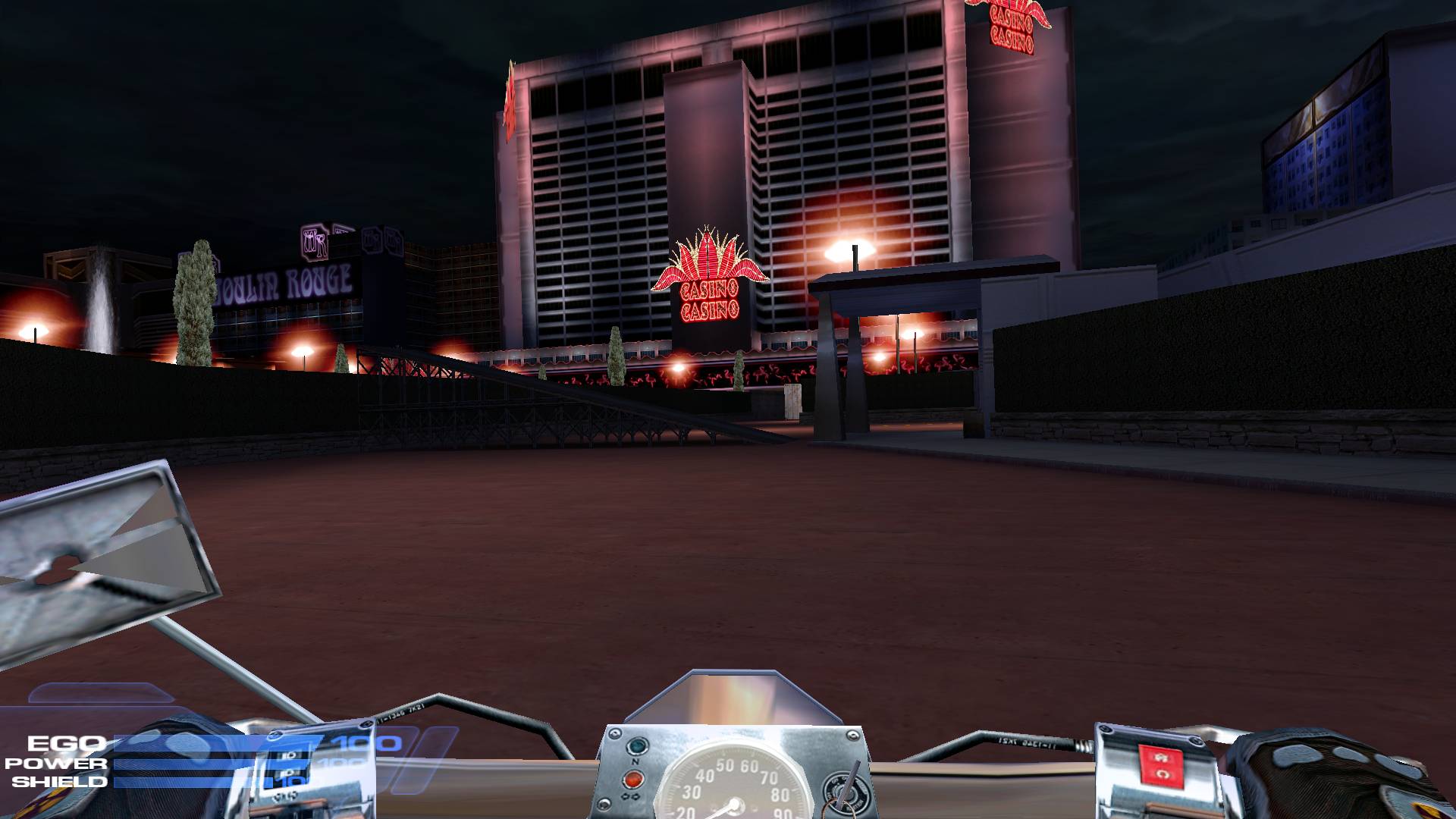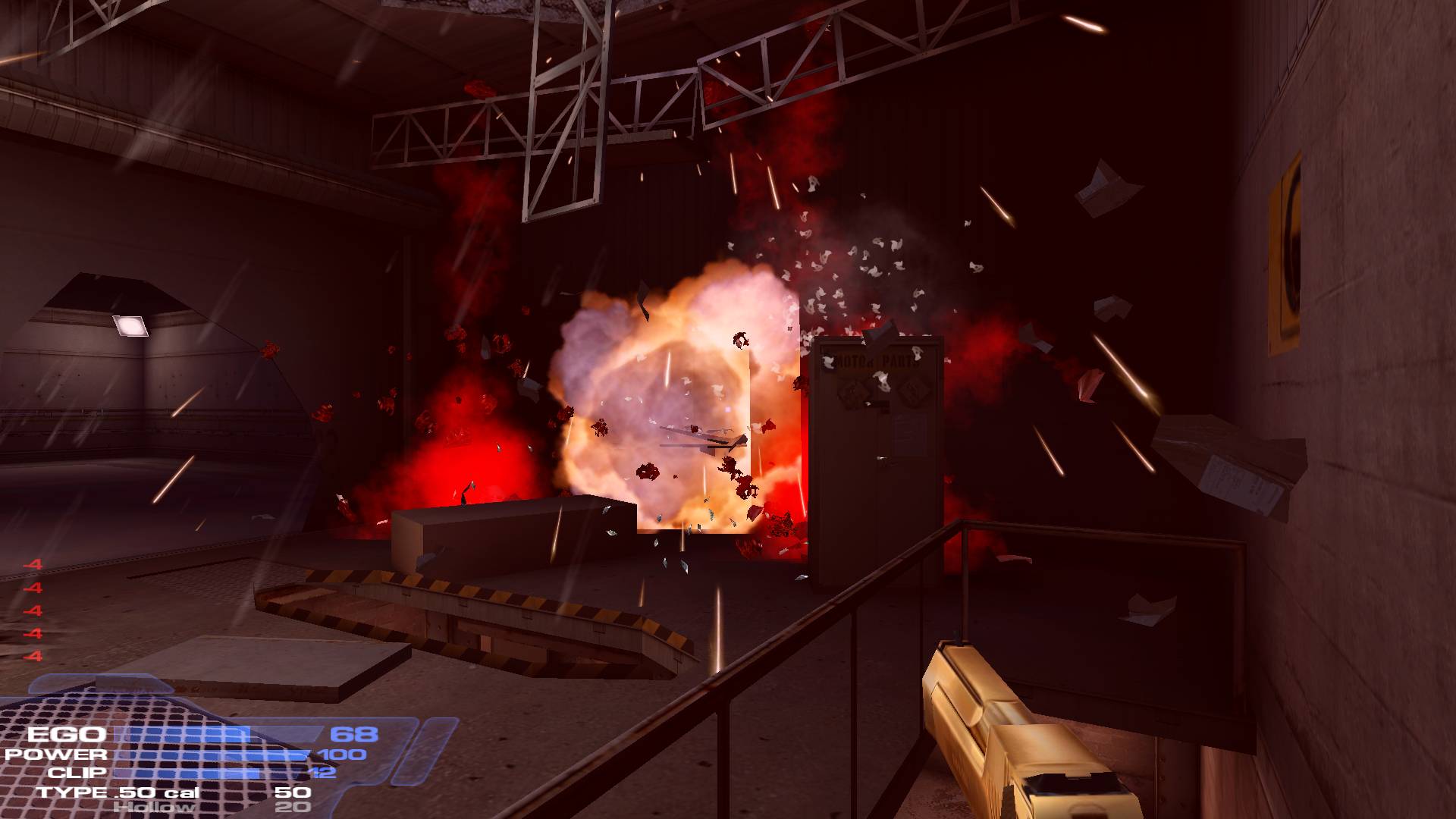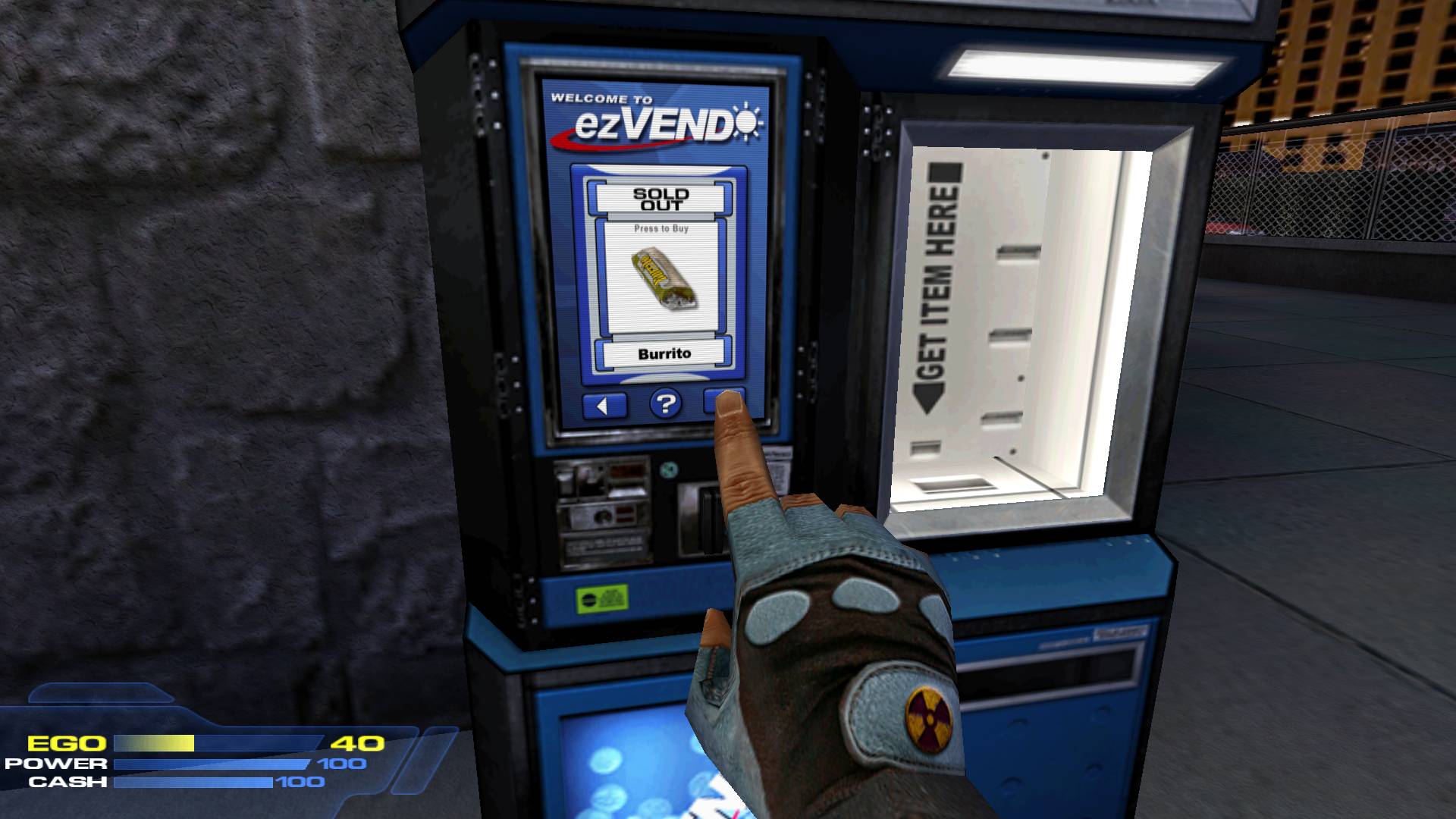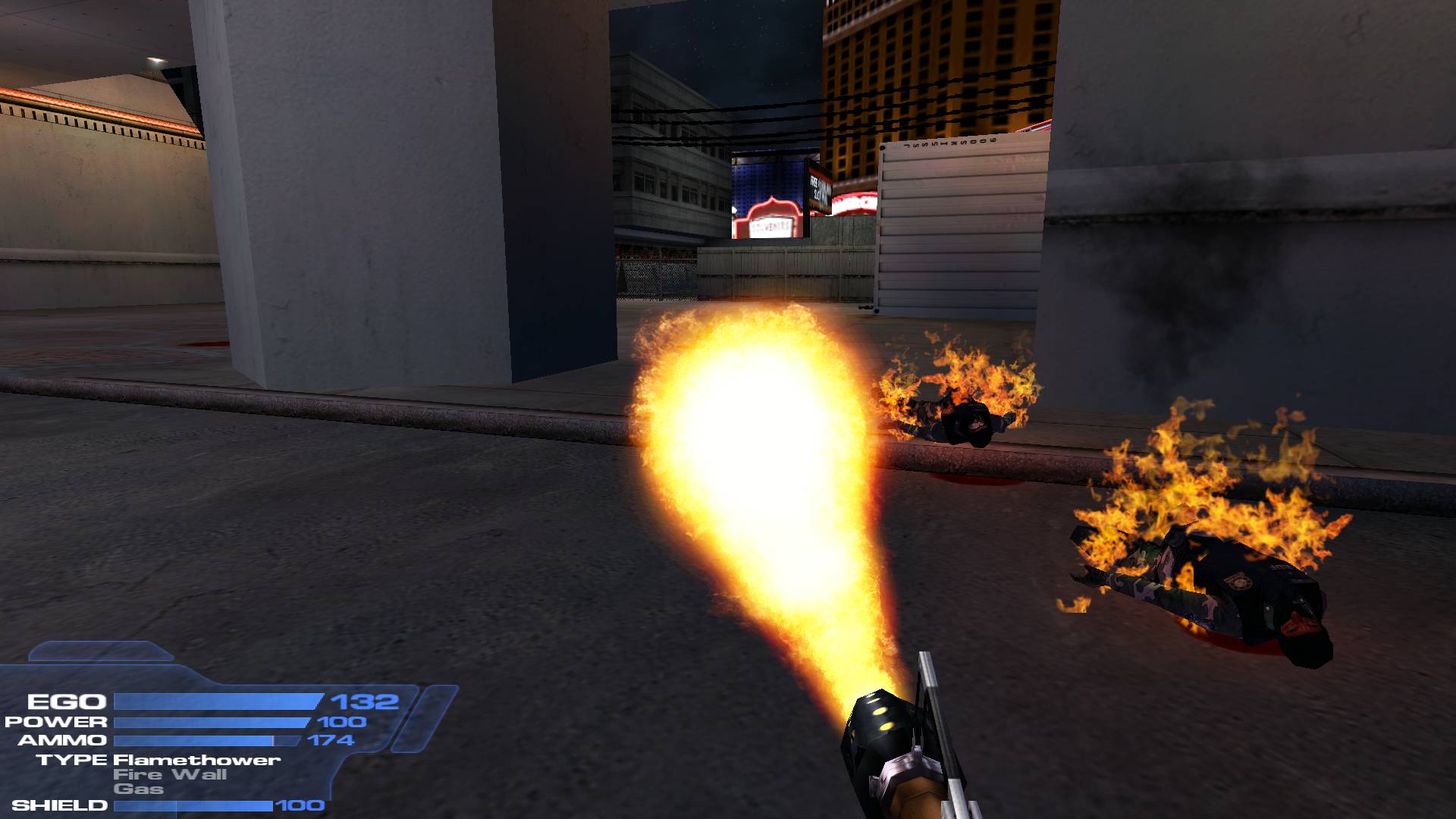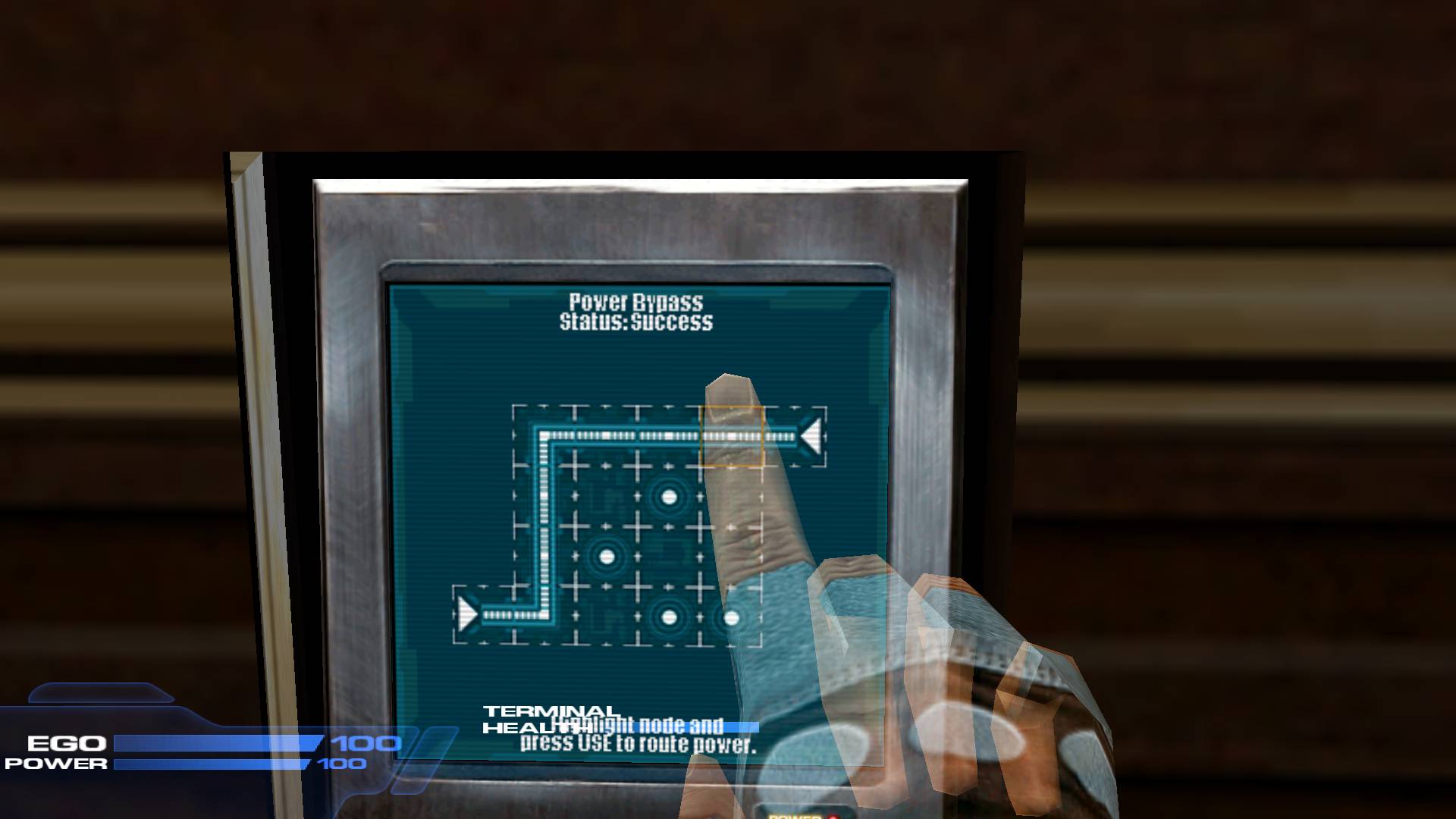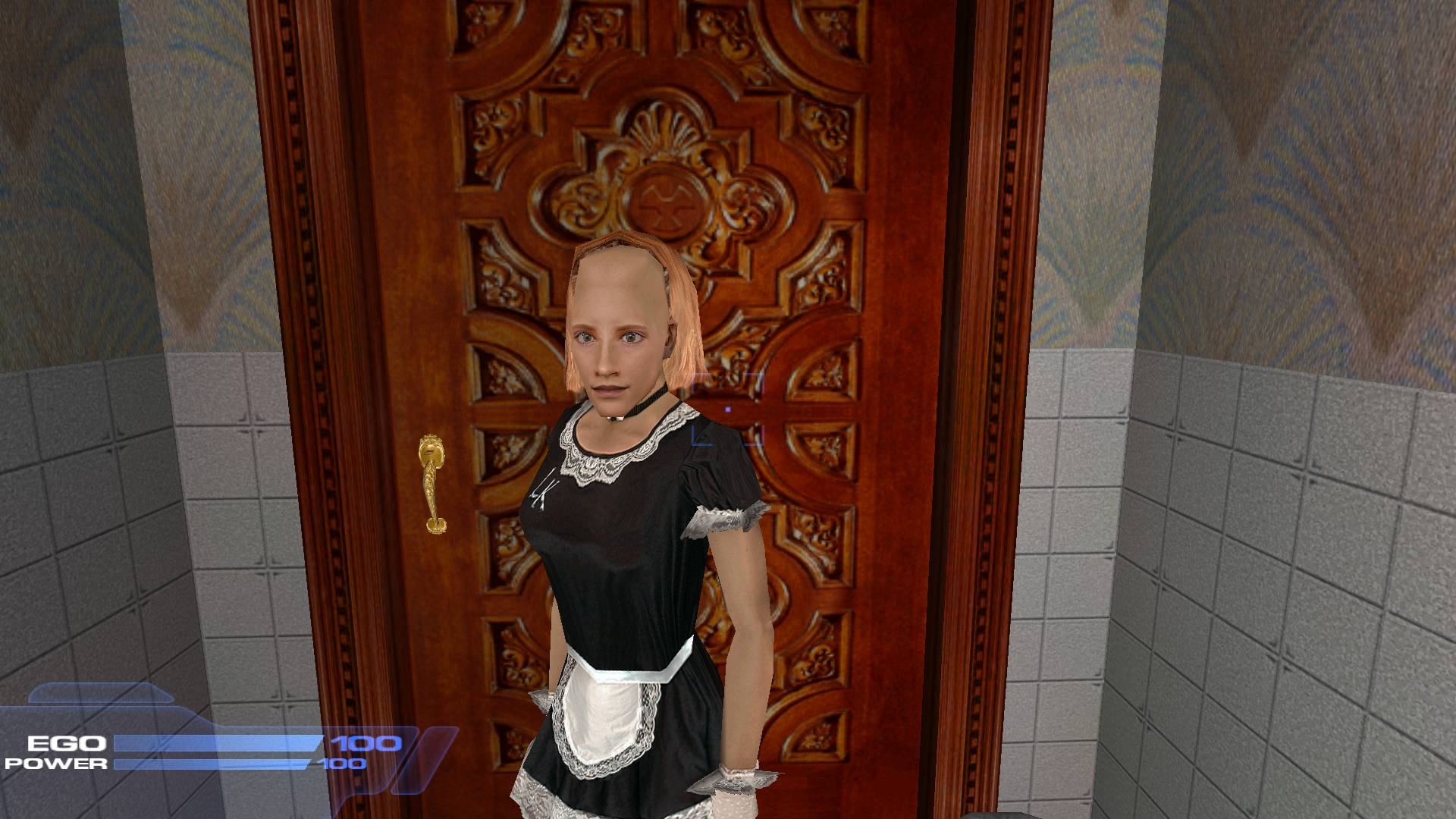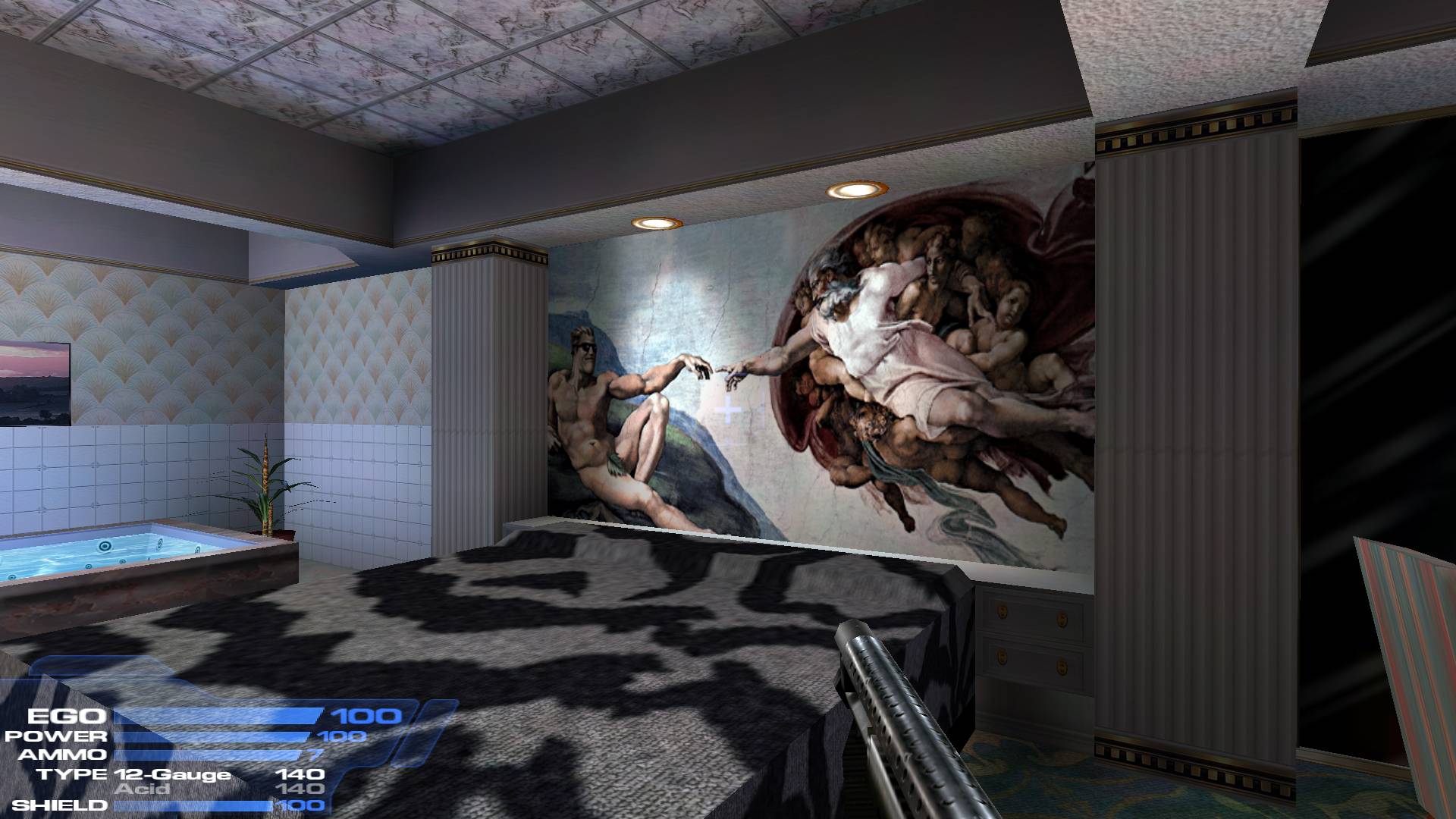
It's one of the great 'What ifs' of PC gaming. What if Duke Nukem Forever had not stumbled onto Steam in 2011 looking tired and confused in a washed-out Doom 3 engine, but had released as depicted in its legendary E3 2001 trailer, where it looked set to steal Half-Life 2's thunder with its cinematic storytelling, imaginative set-pieces, and preposterous levels of interactivity.
Like a lot of middle-aged PC gamers, I've often wondered what this version of Duke Nukem Forever might be like to play. But when a playable prototype of DNF 2001 leaked a few years back, I found myself oddly reluctant to jump in. What if it proved to be terrible, obliterating my fantasy that somewhere there's a universe in which Duke Nukem Forever was good? Worse, what if it proved to be great, leaving me further frustrated that the version we got was such a groaning disappointment?
I felt this way right up until Bluesky user wildweasel486 pointed out that Duke Nukem Forever has now been released for longer than it was in development, which made me acutely aware of how rapidly time is clipping on. At the risk of sounding dramatic, I figured I'd rather go out with my eyes open, and finally decided to check out this unearthed relic of PC gaming history.
I went into the build with two questions: would this version of Duke Nukem Forever have been a good shooter if 3D Realms finished it? And would that theoretically finished game still hold up today in a way the 2011 version doesn't?
These are obviously tricky questions to answer. Not only because the build is unfinished, but also due to its highly variable and unstable nature of the build.
I also encountered some other problems that may or may not have been specific to my experience. First, the save system for the build simply did not work. Second, I was plagued by some truly spectacular glitches, with the screen sometimes completely obscured by textures stretching across it in kaleidoscopic fashion, and some guns like the assault rifle rendered unusable by the weapon model exploding outward like some bizarre crystal formation.
Fortunately, I was still able to explore most of the build, since you can select any available level from the main menu, including their various sub-stages. Indeed, what's immediately surprising is the extent of playable areas. The build takes Duke all the way through the Ladykiller Casino, out into glittering downtown Las Vegas and various locations within it, across the Arizona desert, and eventually to the Hoover Dam. Many of the key sequences present in the E3 trailer are also represented here, though not necessarily in finalised forms.
Keep up to date with the most important stories and the best deals, as picked by the PC Gamer team.
Naturally, I began at the start, where Duke waits inside a dressing room to be called for a television interview. Only, the player character model isn't Duke at all, but one of the SWAT-team guys who are the build's primary cannon fodder. Also, as I discovered while randomly pressing buttons to figure out the controls, he's afflicted by a deeply unfortunate condition whereby pee shoots directly from his face like a decorative fountain.
Button pusher
While the opening is pretty wonky, the remainder of the first chapter is by far the most complete part of the build. Duke's escape from his firebombed penthouse suite is properly built out with navigational puzzles and scripted events like a gunship firing through the windows, while the ensuing firefight with alien-possessed Earth defence soldiers on the rooftop is the one combat sequence across the build that feels properly implemented.
This section also effectively showcases the environmental interactivity that seemed so exciting back in 2001 (and, for me at least, is still pretty thrilling today). As you navigate through Duke's apartment, there's a fully functional pinball machine you can play with, and a keypad where you activate the fire-sprinklers by playing a full-pipe style minigame (eat your heart out, BioShock!). This is more fiddly than it is fun, but the pinball machine really works, and it's kinda wild that 3D Realms was able to build something so intricate in the original unreal engine.
But the highlight of this section, and indeed the entire build, is the vending machines. These crop up throughout DNF, and let Duke purchase healing sandwiches and burritos by selecting them via a digital touchscreen. This kind of integrated menu wouldn't be seen again in an FPS until Doom 3 in 2004, and is the best example of why DNF was so hotly anticipated—it boasted a level of environmental detail that nobody else had done.
After this sequence, the build becomes significantly less cohesive. Las Vegas Boulevard feels enormous and hugely detailed for the time, using lighting and particle effects in a manner way more advanced than concurrent unreal engine games like Deus Ex. But it's also largely empty, and the few combat encounters you have here are very rough.
The motorcycle you pick up at the El Matador is cool, but you get to drive it for all of two minutes before literally running out of road on a half-finished highway. The section in the Slick Willy motel/strip club would struggle to hold up even if it was finished. But it feels especially pathetic in its half-formed state, with bald, lumpy lapdancers flailing around with placeholder voice-lines seemingly read out by Cletus from The Simpsons.
With the scenario design so unfinished, the only way to really judge DNF 2001 is on its combat fundamentals. Although only a few weapons can be picked up in the game, the complete roster can be accessed with a cheat code, which provides some sense of how combat would have felt.
For the most part, the weapons are great! The shotgun has ample kick and its alt-fire acid rounds are sufficiently gnarly. The pipe-bombs and RPG make the most of the build's generous gib system, splattering the walls with gristle and leaving legless torsos and trunkless legs lying about. The shrink ray is almost as funny used on enemies as it is used on yourself.
Even in its highly compromised state, I'd say 2001 DNF has better FPS bones than the 2011 version, and I enjoyed messing around with these weapons in the latter, half-finished levels like Stratosphere Tower and Countdown to Destruction. Assuming 3D Realms had stuck with this version and seen it through to completion, I think it would have been well regarded even launching as late as 2003.
But would we still view it as a great shooter today, as we do games like Quake and Half-Life, and, indeed, Duke 3D? Honestly, I don't think so. While the E3 trailer adopts a semi-serious tone that suggests Duke has grown up a little, the game is just as puerile and gutter-minded as the 2011 version. This, coupled with deeply 2001 jokes about Bin Laden age it like a packet of ham left in the Arizona desert.
But it's equally down to how the combat sequences are designed. The few functioning firefights are all heavily scripted in that post Half-Life manner, and while enemies can move around a bit, they don't tend to. Consequently, the shooting feels much more static than Duke 3D. I found myself thinking a lot about Monolith's No One Lives Forever, another game that was brilliantly ambitious at the time, brimming with ideas and variety, but its approach to combat design hasn't aged especially well over the last 25 years.
Had this version of DNF been finished, I think we would feel similarly about it. It would have a good, maybe great FPS with forward-thinking ideas and enjoyably chunky weapons. But the backward-looking tone and overly scripted combat would likely have stopped it from standing the test of time.
Rick has been fascinated by PC gaming since he was seven years old, when he used to sneak into his dad's home office for covert sessions of Doom. He grew up on a diet of similarly unsuitable games, with favourites including Quake, Thief, Half-Life and Deus Ex. Between 2013 and 2022, Rick was games editor of Custom PC magazine and associated website bit-tech.net. But he's always kept one foot in freelance games journalism, writing for publications like Edge, Eurogamer, the Guardian and, naturally, PC Gamer. While he'll play anything that can be controlled with a keyboard and mouse, he has a particular passion for first-person shooters and immersive sims.
You must confirm your public display name before commenting
Please logout and then login again, you will then be prompted to enter your display name.
